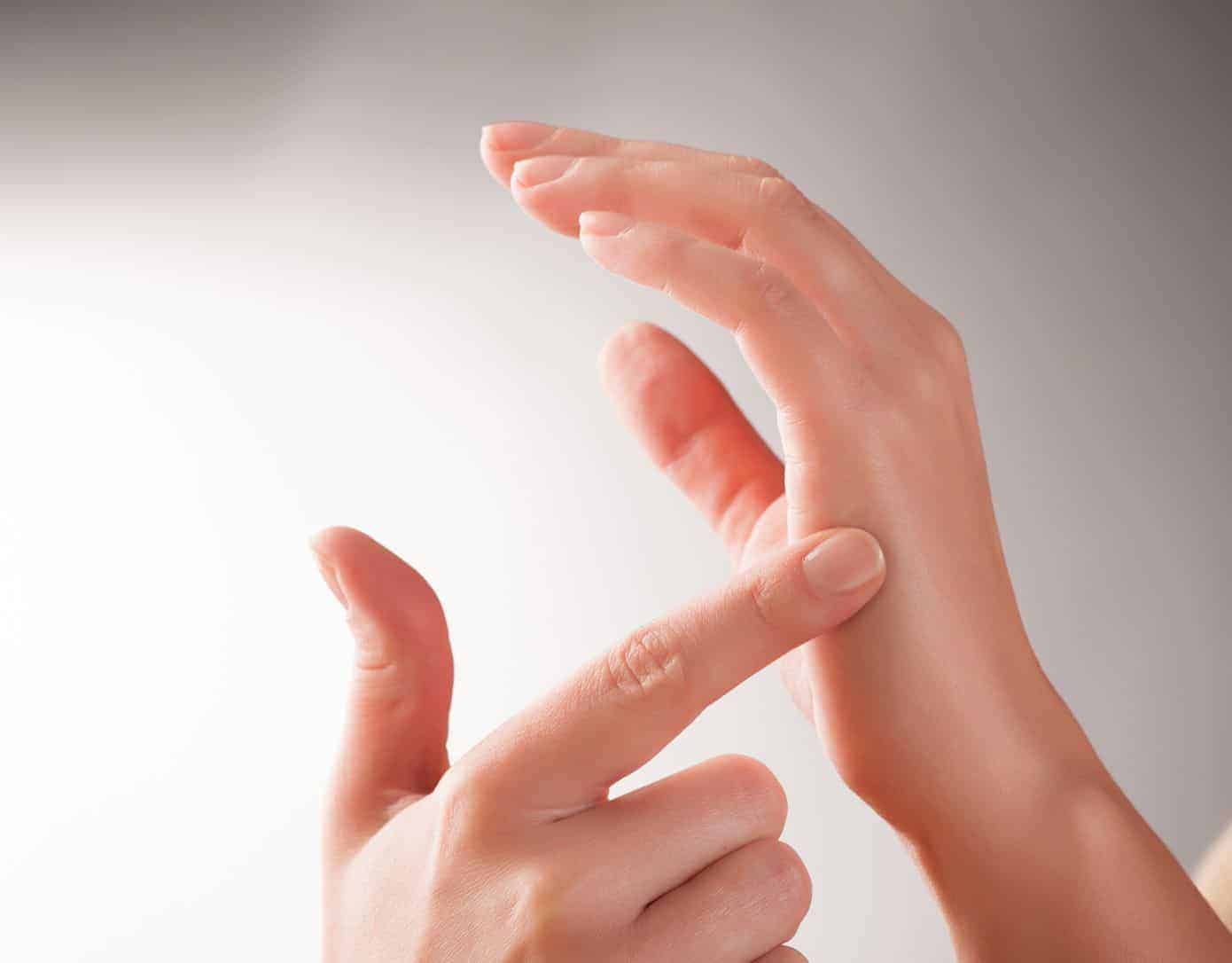Self-Help
Binaural Beats: Benefits, Science, and Applications
THC Editorial Team April 1, 2023

Contents
- Overview
- What Are Binaural Beats?
- History of Binaural Beats
- Potential Benefits of Binaural Beats
- Scientific Support for Binaural Beats
- Applications and Implications of Binaural Beats
- Challenges and Criticisms Pertaining to Binaural Beats
- Summary/Key Takeaways
The healing properties of sound have been explored for millennia. Music, sound repetition, and rhythm have been used as neural entrainment (specific brain responses to certain rhythms) and therapy to alter brain waves to produce a different state of mind. Binaural beats have become an increasingly popular way for people to reduce stress and anxiety, as well as to increase focus and improve sleep.
What Are Binaural Beats?
Listening to two different tones, one in each ear, causes the brain to create an auditory illusion of a third tone resembling “one tone that fluctuates in frequency or loudness: a beat.”1 This extra tone is referred to as a “binaural beat” and is registered by the brain as the difference between the two tones. However, for this to occur, each tone must have a frequency of less than 1,000 Hz, with no more than a 30 Hz difference between the two tones, and both tones must enter the ears simultaneously.2
For example, a tone at 300 Hz heard in the right ear and one at 318 Hz in the left ear will cause the brain to interpret a binaural beat of 18 Hz. The brain will begin to match this in a process called “frequency following response.” Binaural beats may impact “brain activity, behavior, and mood” 2 and can help individuals to achieve a desired mental state.
History of Binaural Beats
Many ancient cultures used drumbeats to produce a trance-like state during ceremonies. However, it wasn’t until 1839 that physicist and meteorologist Heinrich Willhelm Dove performed experiments that identified binaural beats.3 While headphones are used today to produce this effect, Dove created tones of different frequencies and used tubes to lead the sounds into each ear of study participants.
It took more than 100 years before biophysicist Gerald Oster published his findings in 1973 on how binaural beats utilize different pathways within the brain than typical responses to sound stimuli.4 Oster discovered that these auditory illusions may be used as a diagnostic tool and a potential treatment for conditions unrelated to the auditory system.
Potential Benefits of Binaural Beats
Meditation has long been shown to help promote health and wellness, including providing relaxation and reducing stress. Using binaural beats may induce this state more quickly than meditation while potentially providing various benefits based on the Hz of the auditory sensation. These potential benefits are as follows:
Reduced anxiety and stress. For those who are under stress or experience anxiety, binaural beats can help to slow the brain waves to allow the individual to experience a more peaceful state that can put their mind at ease.5
Increased relaxation and improved sleep. Perhaps one of the most common uses for binaural beats is to help alleviate insomnia. These auditory signals may also be used as a part of a meditation practice to assist in reaching a relaxed state more quickly.
Pain management. Certain painful conditions may worsen during certain times of the day, and calming the brain waves may be beneficial. Those with chronic pain may benefit from the use of binaural beats.
Increased focus and attention. In the same way that binaural beats can help promote relaxation and a sense of calm, different Hz frequencies may have a different effect on others – for example, for some, it may speed up brain waves to help increase awareness and provide more energy.
Enhanced memory and cognition. Similar to their ability to increase focus and attention, higher frequencies can help individuals retain, remember, and recall information more effectively.6
Reduced distress from tinnitus. Tinnitus, also known as ringing in the ears, refers to sounds within the ears that only the individual can hear (phantom sounds). The use of binaural beats may help reduce the distress caused by tinnitus.7
Improvements for some children with developmental challenges. Some children with developmental challenges may benefit from using binaural beats as an adjunctive therapeutic approach.8
Increased susceptibility to hypnosis. Binaural beats may enhance a person’s susceptibility to hypnosis (their ability to be influenced by hypnotic suggestions).9
Scientific Support for Binaural Beats
While the exact mechanisms contributing to the effects of binaural beats work are unknown, there have been several research studies on its potential applications that date back decades, and results have been mixed.
In 2018, a meta-analysis of 22 studies found that binaural beats may effectively reduce anxiety and pain while enhancing memory and attention.10 However, it’s important to note that results varied based on the frequency selected, how often this therapy is used, the length of each session, and how quickly a session begins after the onset of symptoms.
A double-blind, randomized control study in 2020 showed that those who underwent binaural beats therapy for chronic pain found significant pain relief and required less analgesic medication than those in the sham stimulation group.11
Insomnia might be one of the most common reasons people try binaural beats. A 2022 pilot study found that this therapy enhanced sleep time and quality while reducing anxiety and anger after awakening, making therapeutic use of binaural beats an effective and low-cost alternative to medications that may cause unwanted side effects.12
Consequently, another study found that while binaural beats lead to a slight improvement in sleep, muscle relaxation, and sleep hygiene were slightly more effective approaches for promoting sleep.13
It has also been noted that binaural beats may affect people differently. For example, one study found that alpha binaural beats had a positive effect on people with low eye blink rates (hypothesized to have low striatal dopamine levels), while those with higher eye blink rates experienced no improvement or a negative effect.1
Applications and Implications of Binaural Beats
Not all binaural beats are the same in getting the desired results. Various frequencies affect different brain waves, so it is essential to know which binaural beats frequency to choose depending on the desired results.
Additionally, this therapy works best when done consistently. A quiet area free from distractions and external stimuli will provide the best results, as will choosing a sitting or lying position. Always use headphones to produce the binaural beat effect, and try to listen for at least 15 to 30 minutes per session.
Binaural beats can be found online and in app stores. They can be combined with music or guided meditation or used alone. Learning the frequencies associated with the different brain waves, listed below, can help determine which listening selection to choose depending on the desired outcome.14,15
0.5 to 4 Hz – Delta Waves.
These slower, low-frequency brain waves are associated with deep sleep. Binaural beats within this range may encourage greater relaxation and deeper, non-REM sleep.
4 to 8 Hz – Theta Waves.
Theta waves are associated with dreams, REM sleep, emotions, and memory formation. Binaural beats that produce 4 Hz may promote the state of mind between wakefulness and sleep and may help reduce insomnia.
8 to 13 Hz – Alpha Waves.
Alpha waves are associated with states of mindfulness, meditation, creativity, and imagination. Enhancing alpha waves might be the way to a calm, productive state. Being relaxed yet alert can help with creativity, reduce stress and anxiety, and increase cognitive function.
13 to 30 Hz – Beta Waves.
Most commonly experienced during alert wakefulness, beta waves are associated with alertness, focus, emotional states, and analytical thinking. However, when these brain waves are more active, they can increase anxiety, especially when they are in the upper range.
Over 30 Hz – Gamma Waves.
Gamma waves are associated with enhanced memory and recall ability, insight, intuition, and awareness. These brain waves help improve cognition and increase an individual’s ability to learn, retain, and recall information. Creativity is also peaked, providing an ability to look at things from various angles.
Challenges and Criticisms Pertaining to Binaural Beats
Those who wish to try binaural beats should remember that this therapy may not work for everyone. Some criticism associated with binaural beats is due to limited research. Studies have been small, and some have been inconclusive or provided contradictory results.16
Additionally, it can be practically challenging to find the right Hz level for relief. Although choosing the correct brain wave to enhance is helpful, some people need a more precise frequency to notice results, while others can select anything within that range. Headphones or earbuds are necessary, but the volume should not be too high because this can lead to hearing loss over time.
Although the risk of side effects is low, binaural beats have been associated with a short-term increase in anxiety, anger, depression, or confusion in some people that may be related to the frequency selected. Also, those with epilepsy or other health conditions should speak with their primary care providers before trying this sound therapy.
Summary/Key Takeaways
A binaural beat is an illusion that the brain creates of a third sound when two differing sounds within a specified frequency range enter separate ears. The frequency of the binaural beat will activate specific brain waves and may provide benefits such as the increased ability to sleep, decreased anxiety and stress, enhanced meditation, and increased cognition.
While many small studies have shown benefits to using binaural beats as a form of therapy, not all people have the same results, as it can be challenging to pinpoint the frequency needed to obtain the desired results. However, since the risk of side effects is low, exploring this approach may be valuable for those interested.










